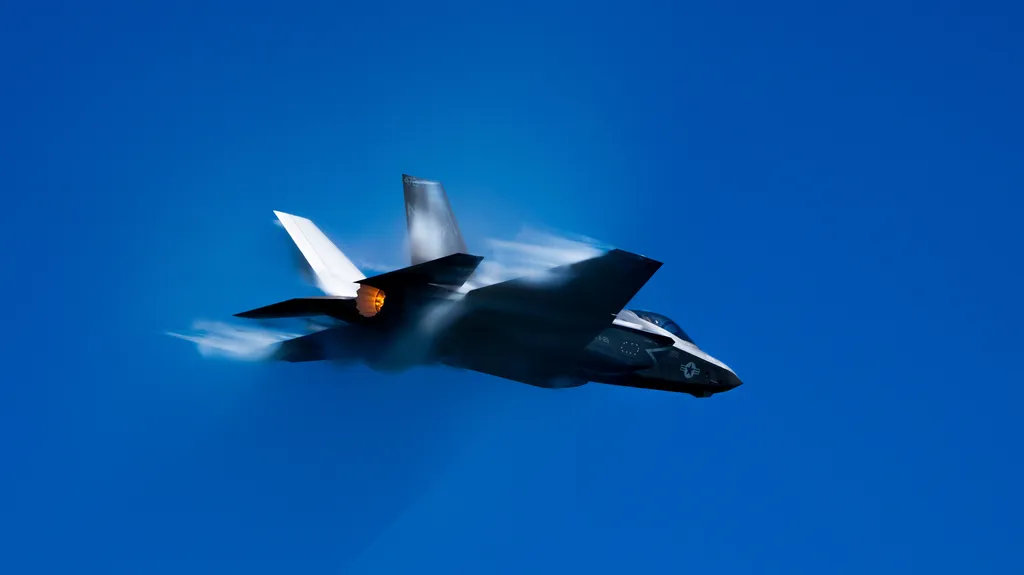A landmark defence partnership between the United States and Saudi Arabia is set to revolutionise arms sales to the kingdom, with the F-35 warplane as just one of many advanced systems on the table. Current and former US officials, speaking anonymously to Middle East Eye, revealed that the conversation has shifted from uncertainty to concrete planning. “The conversation has changed from ‘we will see’ to ‘yes, but how and when,'” said one insider familiar with the deal.
The Strategic Defence Agreement (SDA), signed by US President Donald Trump and Saudi Crown Prince Mohammed bin Salman, marks a significant shift in US-Saudi military relations. The agreement, still being finalised by US officials, prioritises Saudi Arabia in terms of wait times and negotiations for sophisticated US weapons, placing the kingdom ahead of other Gulf states and US partners. “The Saudis have received Trump’s go-ahead to get the best in defence technology,” confirmed a former senior US official.
The deal underscores Trump’s pledge to supply Saudi Arabia with “top-of-the-line” F-35 warplanes, despite Israeli lobbying efforts to limit the sale to less advanced aircraft. However, the F-35 is just one item on Saudi Arabia’s wish list. Given the lengthy delivery timelines for the F-35, the kingdom is also exploring more futuristic weapons systems, such as Collaborative Combat Aircraft (CCA) drones. These drones, designed to operate alongside manned aircraft like the F-35, can conduct jamming operations and launch projectiles. Saudi Arabia is already in discussions with US-based Shield AI for acquiring small, agile drones. David Alexander, president of General Atomics, revealed that his company is in talks to sell up to 200 CCA drones, in addition to traditional MQ-9B drones.
Beyond military technology, the agreement also sets the stage for separate deals involving civilian nuclear technology and AI chips. The US designation of Saudi Arabia as a major non-NATO ally will expedite weapons transfers and deepen military training, bringing the kingdom in line with other Middle Eastern states like Bahrain, Qatar, and Kuwait, which already hold this status.
Crown Prince Mohammed bin Salman’s visit to Washington, his first since 2018, has been met with a lavish welcome. Despite the shadow of the 2018 murder of Jamal Khashoggi, for which the CIA implicated the crown prince, his international standing has since risen. He has navigated complex regional dynamics, including Israel’s war on Gaza, rekindled relations with Iran, and extricated Saudi Arabia from the Yemen conflict. The crown prince seeks to strengthen Riyadh’s economic and security ties with Washington.
However, the designation of “major non-NATO ally” falls short of the binding defence commitments many Gulf countries desire. The memory of the 2019 Aramco attack by Iran, which the first Trump administration did not retaliate against, has left a lasting impact on Saudi Arabia’s trust in US security guarantees. Hesham Alghannam, a Saudi defence analyst, highlighted that the kingdom seeks a mutual defence treaty akin to the one the US has with Japan, though such an agreement would require Senate ratification.
The SDA comes at a time when Saudi Arabia is pushing for a more robust defence partnership with the US. The crown prince emphasised the importance of securing a clear path towards a two-state solution in the context of the Abraham Accords, the normalisation agreements brokered by Trump between Israel, the UAE, Morocco, and Bahrain. The crown prince’s visit included a White House black-tie dinner attended by CEOs of major corporations like Apple, Nvidia, Chevron, and Bechtel, underscoring the broader economic dimensions of the US-Saudi relationship.
This defence partnership is poised to reshape the geopolitical landscape, reinforcing the US-Saudi alliance while addressing the kingdom’s strategic needs in an increasingly volatile region.

